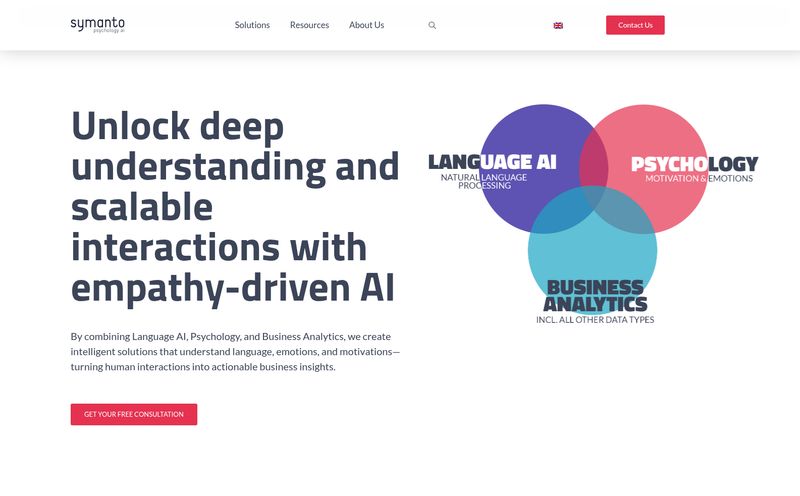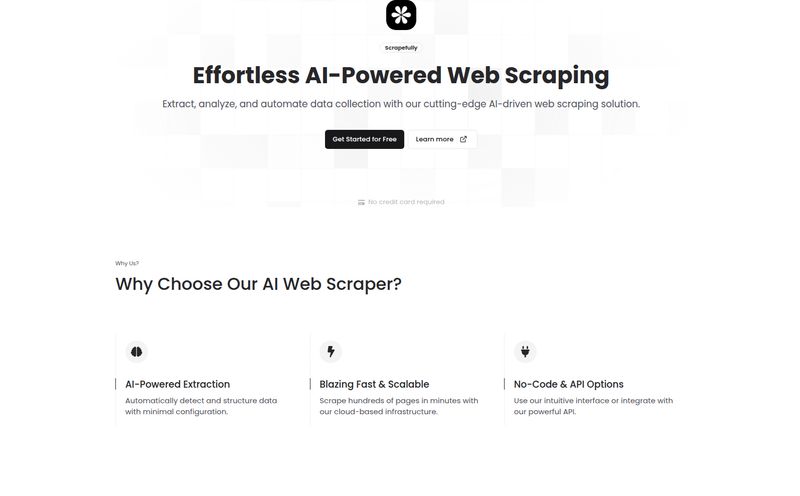If you've ever worked in machine learning, you know the feeling. You’ve spent weeks, maybe months, wrestling with data, tuning hyperparameters, and finally—finally—you have a model that works. It’s beautiful. It’s a work of art. You show it to your team, and everyone is thrilled. Then someone asks the dreaded question: “Great, so when can we use it in the app?”
And that's where the dream dies. Suddenly, you're not a data scientist anymore. You're a DevOps engineer, a cloud architect, and a security expert all rolled into one. You're wrestling with Docker containers, configuring Kubernetes pods, setting up auto-scaling groups, and trying to figure out why your dependencies are throwing a fit. I’ve been there. I once spent the better part of a sprint trying to get a fairly simple NLP model deployed, only to have it crash under a moderate load because the scaling policies were all wrong. It's the painful “last mile” of ML, and honestly, it sucks the joy out of the whole process.
The MLOps space has exploded with tools trying to solve this, but many of them just trade one kind of complexity for another. That's why when I stumbled upon a new platform called Deployo, with its bold claim of “Deployment, minus the fuss,” I was skeptical. But also… incredibly intrigued. Could it really be that simple?
So, What's the Big Deal with Deployo?
At its core, Deployo is a platform designed to take your trained AI model and turn it into a production-ready, scalable application with, and this is the kicker, one click. It's built to handle all the messy, frustrating infrastructure stuff that stands between your Jupyter notebook and a real-world product. Think of it like Vercel or Netlify, but for your AI models. Those platforms made web deployment a breeze, and Deployo aims to do the same for the machine learning world.
It’s not just about pushing a button. It’s about what that button does for you. It automatically packages your model, sets up a secure and scalable endpoint, and provides you with an API you can immediately integrate. It’s designed to slash that deployment timeline from weeks of painful engineering down to just a few minutes. A bold promise, for sure.

Visit Deployo
The Features That Actually Matter
A flashy landing page is one thing, but as we all know, the devil is in the details. I took a look under the hood to see what Deployo is really offering, and a few things stood out.
The "Push to Prod in Just a Click" Promise
This is the headline feature, and for good reason. The idea is to abstract away the entire infrastructure setup. You’re not configuring servers or writing complex deployment scripts. Deployo handles that. What makes this feel more plausible are its integrations. They mention direct deployment from places like HuggingFace and Weights & Biases, which is smart. It means the platform can plug directly into workflows that data scientists are already comfortable with. It also supports multi-model chaining and custom Python logic, so it's not just for simple, single-file models. This flexibility is key.
"Grows When You Need It. Shrinks When You Don't."
Ah, autoscaling. The holy grail for any application that might face unpredictable traffic. Manually configuring scaling for GPU-intensive ML models is a special kind of hell. You either over-provision and burn cash, or under-provision and watch your app fall over during a traffic spike. Deployo claims both horizontal and vertical autoscaling. This means it can both add more instances of your model (horizontal) and give individual instances more power (vertical) as needed. It also mentions “load-aware distribution,” which is a fancy way of saying it’s smart about routing requests to avoid overloading any single instance. This isn't just a convenience; it's a massive cost-saver and a critical feature for reliability.
Deploy Anywhere, No Strings Attached
Vendor lock-in is a real fear. You build your entire stack on one cloud provider, and moving becomes a monumental task. I was genuinely pleased to see Deployo positioning itself as cloud-agnostic. They explicitly show support for AWS, GCP, and IBM, and even mention on-premise support. This is huge. It gives teams the freedom to choose the best infrastructure for their needs without being tied to a single ecosystem. It’s like having a universal power adapter for your AI models—it just works, wherever you plug it in.
The Little Things That Make a Big Difference
Beyond the big three, there are a few other features that show they understand the real-world pains of deployment:
- Automatic Network Policy Management: Security is often an afterthought for teams rushing to deploy. Automating network policies is a great step towards making applications secure by default. They even mention SOC 2 and HIPAA compliance, which is a big signal for enterprise-readiness.
- Automatic Version Compatibility: Anyone who has screamed at their screen over a `requirements.txt` file knows this pain. Ensuring dependencies and versions are handled automatically is a godsend.
- Swagger Endpoint Documentation: Generating API docs is tedious but necessary work. Having it done automatically means your frontend team or other service consumers can get to work immediately.
My Honest Take: The Good and The Could-Be-Better
Okay, so after digging in, I'm genuinely optimistic. What I'm most excited about is the sheer speed and reduction in friction. The value isn't just in the tech; it's in what it enables. It empowers data scientists to own more of the deployment process, and it allows smaller companies to punch above their weight by launching sophisticated AI features without a dedicated MLOps team. The focus on avoiding cloud vendor lock-in is also a massive plus in my book.
However, lets pump the brakes a little. There are a few caveats. The platform is new, and some features are still listed as “Coming Soon.” This is pretty standard for a product in its early stages, but it's something to be aware of. You're betting on their roadmap. The biggest question mark, of course, is pricing.
What's This Going to Cost Me?
Right now, this is the best part. I headed over to their pricing page, and it's beautifully simple. They have one plan:
| Plan | Price | Includes |
|---|---|---|
| Beta User (Early Access) | $0 | Model Deployments, Analytics, Scalable Endpoints, Inference API, and Organization Management. |
Yes, you read that right. It's currently free for early access users. This is an incredible opportunity for anyone looking to try it out. A free tier this generous won't last forever, so if you're even remotely interested, I'd suggest signing up for the beta now. The uncertainty about future pricing is the main hurdle for long-term planning, but as a way to kick the tires and solve an immediate deployment problem, it's a no-brainer.
So, Is Deployo the Right Tool for You?
Who is this for? I see a few clear winners. Startups and small businesses who need to move fast and don't have the resources for a full-time infrastructure team. Data scientists and ML engineers who are tired of being bottlenecked by deployment cycles and just want to see their work in the wild. Even larger teams could benefit from standardizing their deployment workflow on a platform like this to increase velocity.
Who might not need it? If you're a massive enterprise with a deeply entrenched, highly customized MLOps platform that's been built over years, this might be a tougher sell. Or, if you're a hobbyist just running a simple Flask app on a single server, this might be overkill. But for the vast majority in the middle, Deployo seems to hit a very sweet spot.
Frequently Asked Questions about Deployo
- What can I actually do with Deployo?
- You can take a trained AI/ML model and instantly turn it into a scalable, production-ready API endpoint. This allows you to integrate your model's predictions into websites, mobile apps, or other backend services without worrying about the underlying infrastructure.
- Is Deployo secure for production use?
- They're clearly thinking about security from the start. The platform automates network policies and is built with SOC 2 and HIPAA compliance in mind, which are strong indicators for handling sensitive data and meeting enterprise standards.
- How do I get started with Deployo?
- Right now, they are in an early access phase. You can visit their website and sign up for the free Beta User plan to get started and begin deploying your models.
- What ML frameworks does Deployo support?
- The website shows icons for popular frameworks like PyTorch and XGBoost. Given its versatile approach, it likely supports most major Python-based ML libraries, especially through its custom Python logic feature.
- How much will Deployo cost after the beta?
- That's the million-dollar question. Pricing information hasn't been released yet. Future models could be based on usage (like API calls or compute hours) or tiered subscription plans. It's best to check their website for the latest information as they move out of beta.
Final Thoughts
Look, the MLOps world is noisy. But every now and then, a tool comes along that feels like it just gets it. Deployo seems to be one of those tools. It's tackling a genuine, widespread pain point with a solution that prioritizes simplicity, speed, and flexibility. While it's still early days, the foundation is incredibly strong.
By removing the drudgery of infrastructure management, it allows teams to focus on what they do best: building incredible AI-powered products. I'm genuinely excited to see how Deployo evolves and what the community builds with it. If you've ever felt the pain of ML deployment, do yourself a favor and check out their beta. You might just save yourself a whole lot of headaches.



